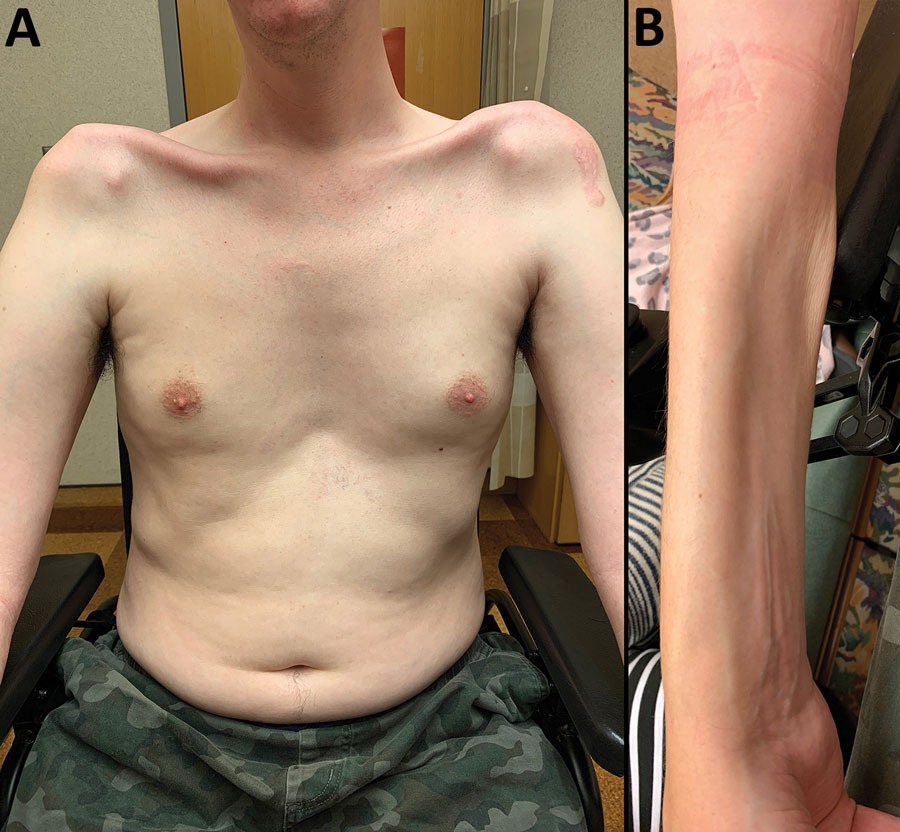Volume 28, Number 11—November 2022
Dispatch
Imported Haycocknema perplexum Infection, United States1
Figure 1

Figure 1. Physical manifestations of a patient who had imported Haycocknema perplexum infection, United States. Images show profound atrophy of the pectoralis and deltoid (A) and the forearm flexor musculature (B).
1This study was presented as a late breaker abstract at the 68th Annual Meeting of the American Society of Tropical Medicine and Hygiene, November 20‒24, 2019, National Harbor, Maryland, USA.
Page created: September 10, 2022
Page updated: October 24, 2022
Page reviewed: October 24, 2022
The conclusions, findings, and opinions expressed by authors contributing to this journal do not necessarily reflect the official position of the U.S. Department of Health and Human Services, the Public Health Service, the Centers for Disease Control and Prevention, or the authors' affiliated institutions. Use of trade names is for identification only and does not imply endorsement by any of the groups named above.